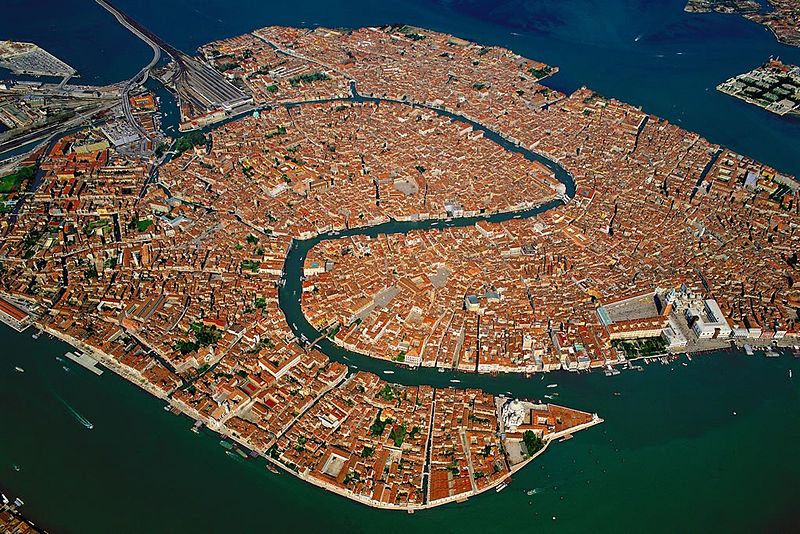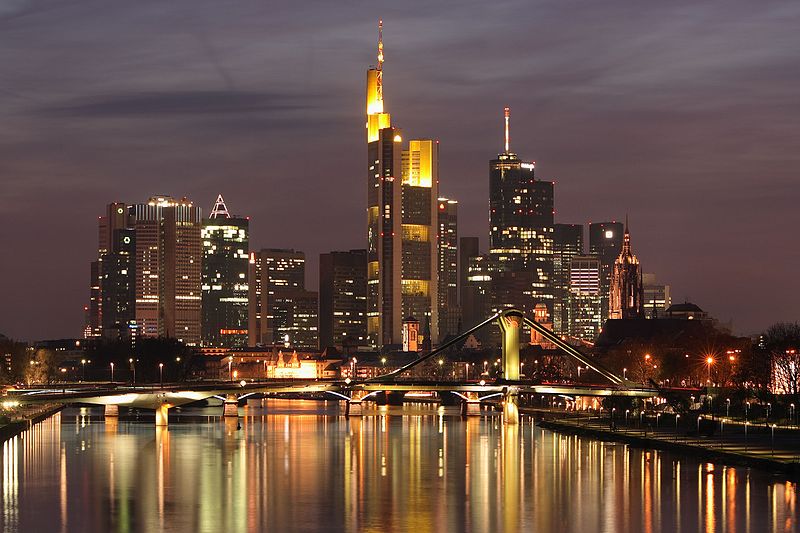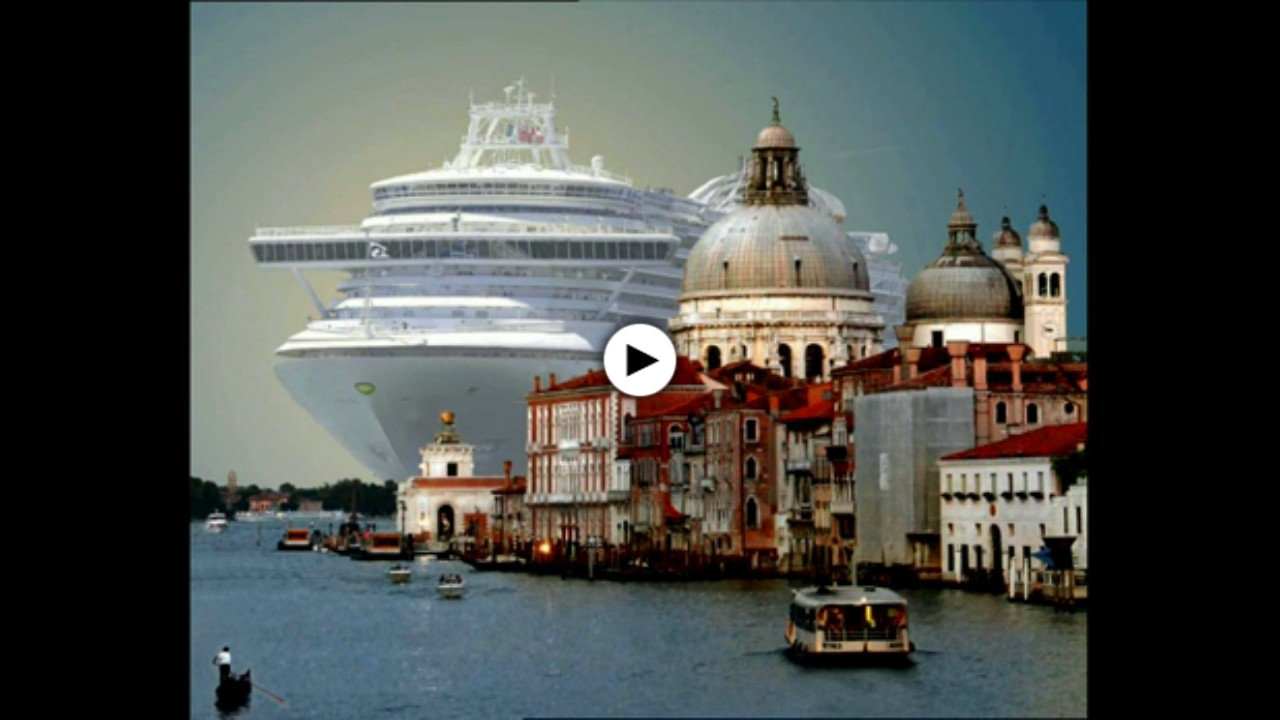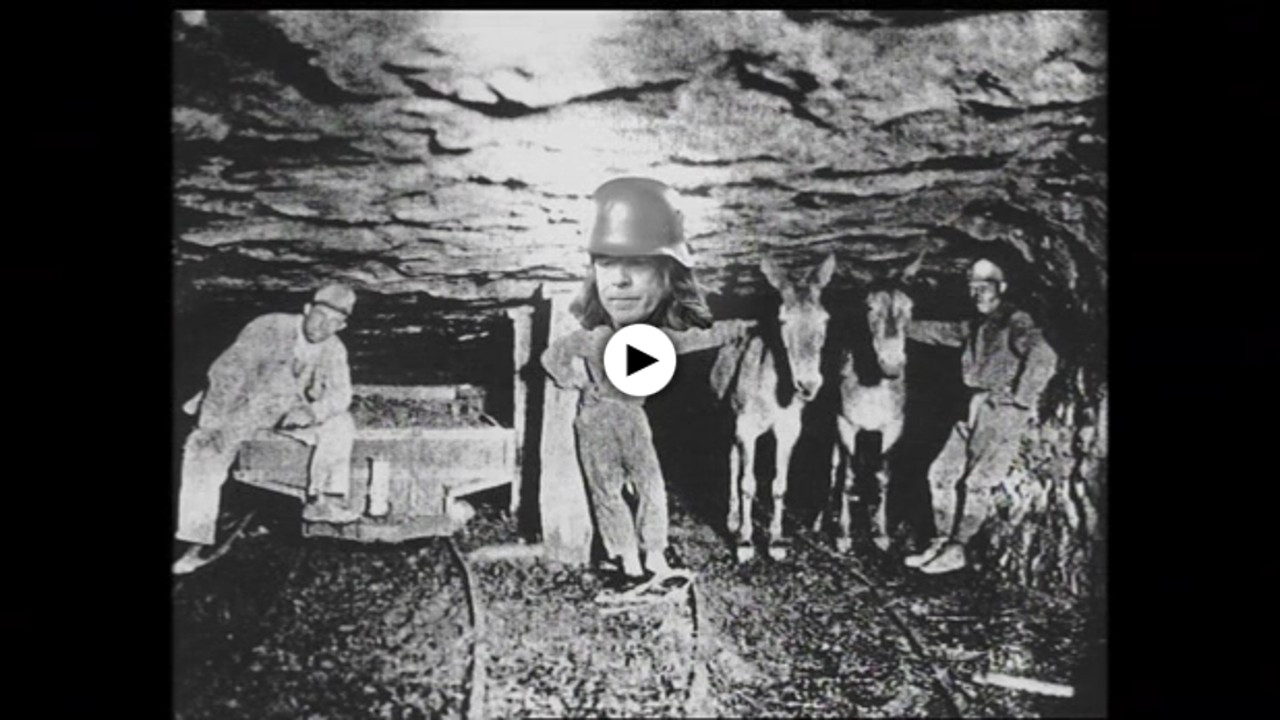
Aerial view of the old town island of Venice and its surrounding lagoons. Canal Grande in the center of the photo. Taken from a balloon. (Author: Horst-schlaemma/wikimedia)
► Sam Remembers Papa Kong
In the Office Tower
In early August 2011, one of the EXPERT ANIMAL TRAINERS OF CAPITAL sat in one of Frankfurt’s skyscrapers. His eyes didn’t move from his computer screen. On this day, the experts were at their wits’ end. Graphically, they saw the stock-market crash as a vertical line which, within four minutes, signalled the loss of four percentage points of the DAX. This represented a value of several billion dollars. The practitioner sitting in the semi-darkened room in the sky had no theory by which to explain what was happening. Since when does a lion tamer have a theory? He knows his animals. The behaviour of this beast, which was unleashing monstrous destruction on both sides of the Atlantic, was unknown to the experts. Was it a new species? Or was it the crisis of 1929, just in a different guise? The larger-than-life man in his boardroom, who could otherwise rein in markets, would have liked to behave practically: crack nuts, peel an apple, pour a glass of mineral water. He wanted to be occupied with something concrete rather than having to stare at the screen and wait.

Downtown Frankfurt am Main, Germany; seen from Deutschherrn Bridge. (Author: Nicolas Scheuer/wikimedia)
► What Exactly Is A City?
► The „Total Worker“ At Verdun
Hermetic and Associative Forces
Ilse von Schaake lived with her Russian lover for a long time. Working from Berlin for the Science Center in Akademgorodok, he wrote a study on the POTENTIAL FOR WORLD-SCALE REVOLUTIONARY CHANGE. The secondary question guiding his work was: which forces in humans tend toward association and which ones hamper the unification of these forces? The comrade gave up on the project when he turned his affections to a younger woman (from a family in North Rhine-Westphalia with industrial assets). Years later, Ilse could not completely banish the traitor from her heart. In the meantime, out of spite and tenacity, characteristics residing in her family, she continued with his project. The manuscript encompassed roughly two thousand pages. East German publishers, with which she had contacts, showed no interest in its publication. She came to the following conclusion: there are strong forces in people
She came to the following conclusion: there are strong forces in people (my family, my progeny, my property) that have a hermetic impact. They allow for no comprehensive associations. They are unsuitable for revolution. In contradistinction to these strong forces, there are weak and still weaker forces (the interest in physics, logic, and everything that I would willingly sell from myself and my loves). They rapidly coalesce with one another and bring about change over a long period of time. Even the evolution of modernity harks back to these weak forces, Ilse believed. In evolution, weak forces exclusively produce weak changes. The weak messianic force (Walter Benjamin) – that is to say, a connection back to roots in history — is the only fountain of hope. Ilse von Schaake wants to finish the work by 2018, the five hundredth anniversary of the Reformation in Wittenberg.


